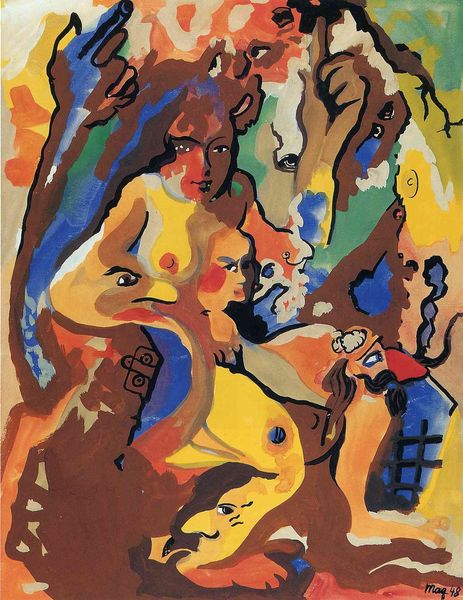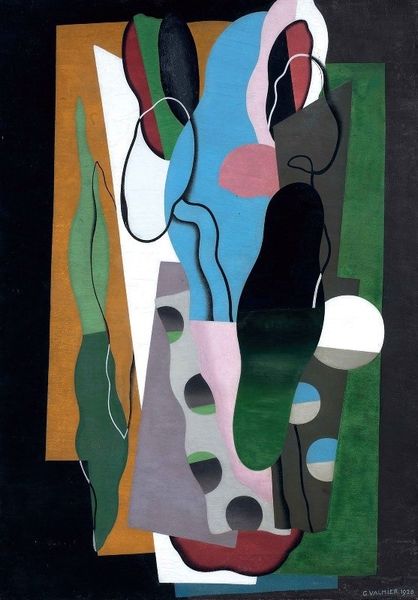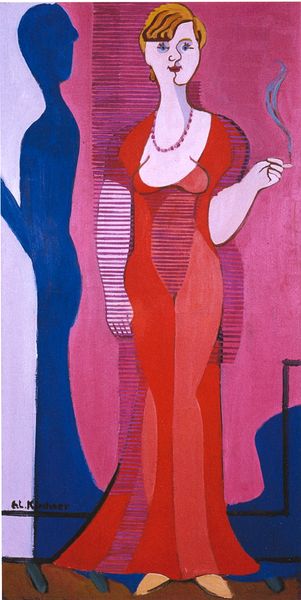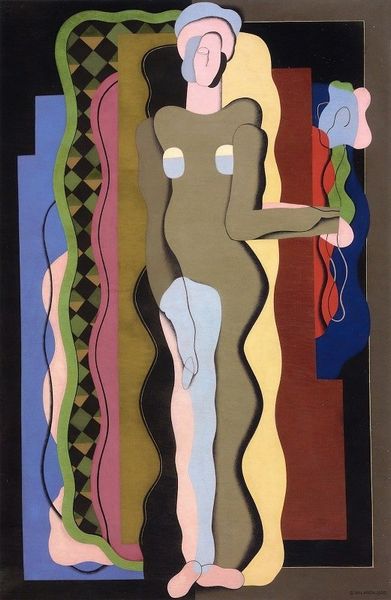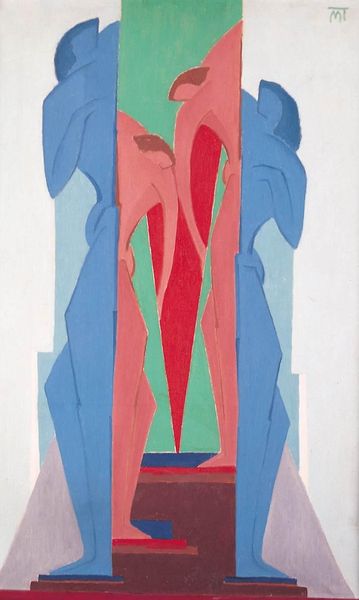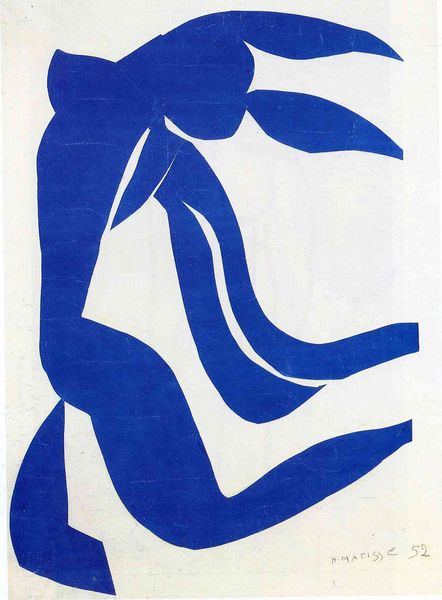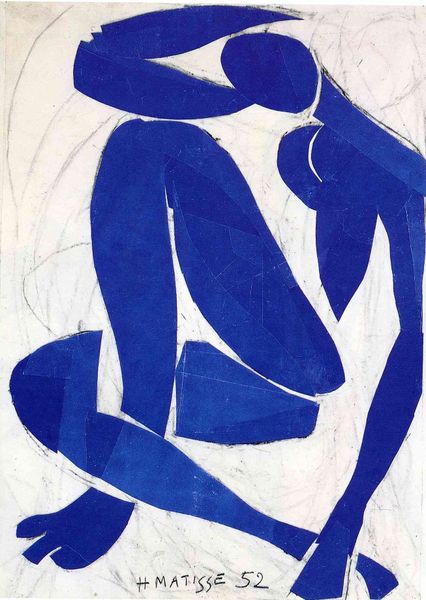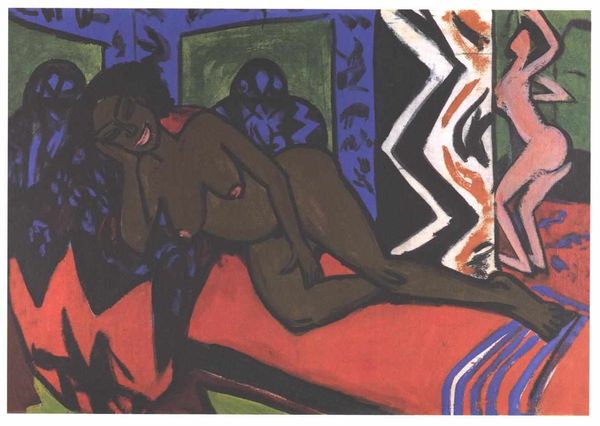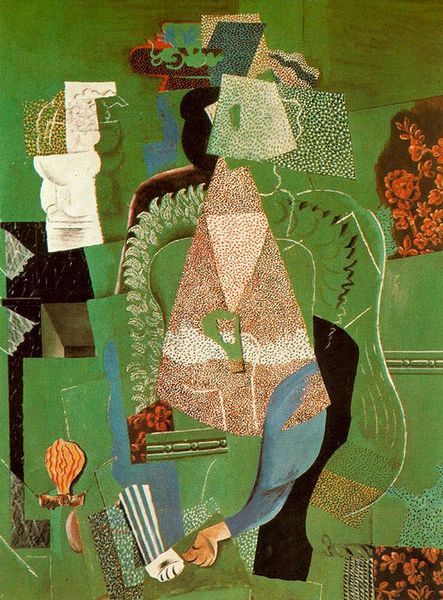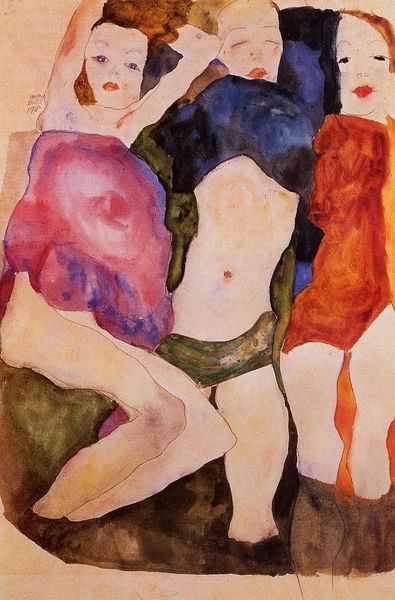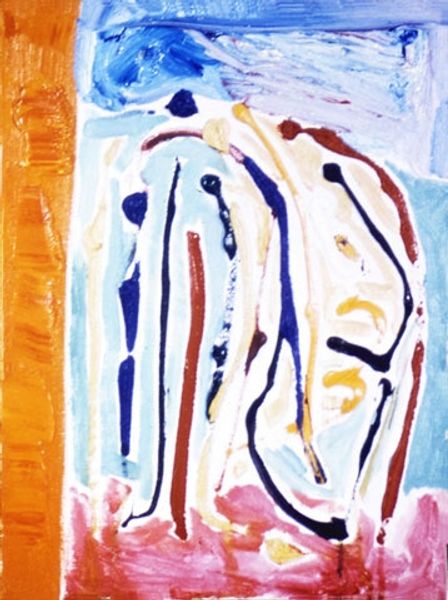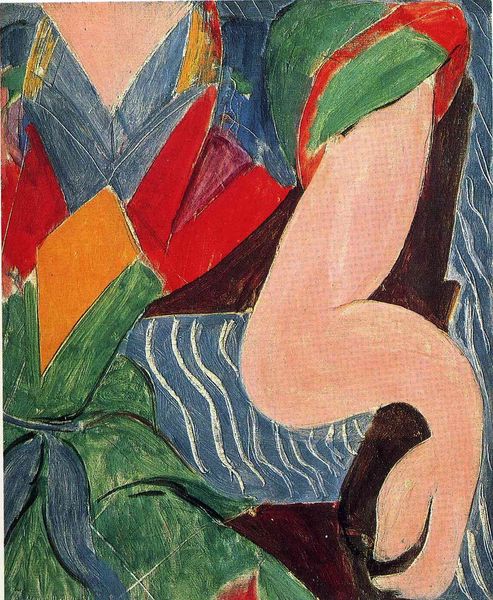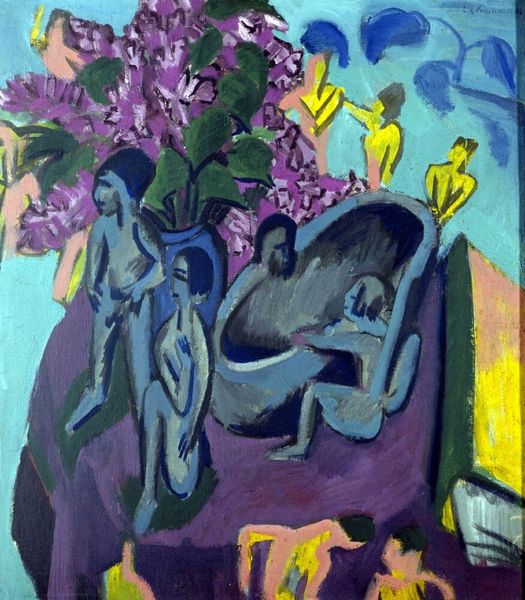
Zulma 1950
0:00
0:00
henrimatisse
National Gallery of Denmark (Statens Museum for Kunst), Copenhagen, Denmark
Copyright: Henri Matisse,Fair Use
Curator: This is Henri Matisse's "Zulma," painted in 1950. It's an oil on canvas and quite striking with its bold color fields and simplified figuration. Editor: Striking indeed! The color palette is unexpected – almost jarring – but somehow it resolves into a compelling composition. It exudes confidence. Curator: The "jarring" nature is partly attributable to Matisse’s fauvist sensibilities. He was a pioneer of using color not to imitate nature, but to express emotion. This was quite radical in the established art world. Editor: Absolutely. And the flattened space contributes to the painting’s emotional punch. The nude figure almost becomes a symbol, stripped of individualizing features, and replaced by shapes and colors. Note the use of golden yellow that visually splits the cobalt blue body from head to toe, bisecting the chest. That's an interesting use of line, suggesting division and balance at once. Curator: It's fascinating to consider this piece within Matisse's larger body of work, especially considering that by 1950, he was increasingly focused on his cut-outs. We should remember how deeply Matisse was embedded within the social milieu of early 20th-century Paris and beyond. Editor: The visual echoes here of female archetypes are fascinating. Is the work playing with themes of unveiling, exposure, or even vulnerability, through this symbolic figuration of Zulma? How might that relate to social conventions and gender roles in the post-war era? Curator: What I find particularly compelling is how he engages with his immediate history, and the legacy of artistic tradition. His choice to name her "Zulma" also carries an interesting cultural resonance; who was Zulma? How does knowing the name add to or shift our viewing? Editor: The work is an assertion of modernist ideas about what the function of art might be – more concerned with visuality than representation. For me, "Zulma" evokes questions rather than definitive answers. It stands apart from realism while inviting symbolic readings. Curator: Precisely, its simplicity fosters complex inquiries regarding art’s role in society. I find "Zulma" deeply thought-provoking in how it navigates the public image of women.
Comments
No comments
Be the first to comment and join the conversation on the ultimate creative platform.
